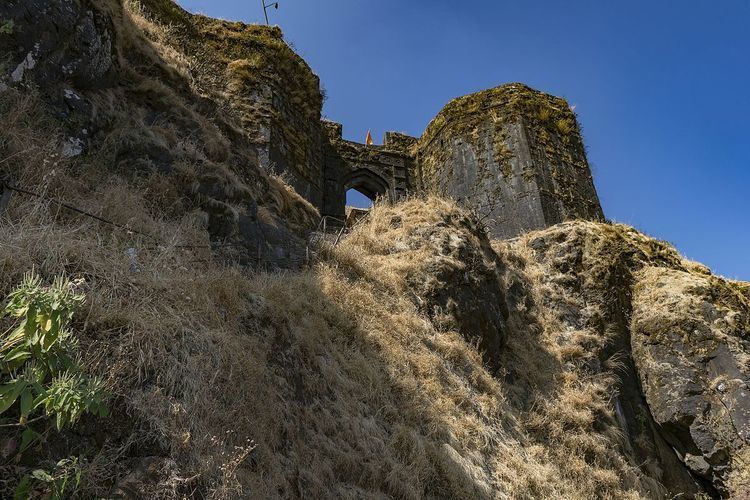Elevation 4,600 ft (1,400 m) | Range Western Ghats | |
 | ||
Location Pune District, Maharashtra, India Parent range Sahyadri, Western Ghats Easiest route From Pal Village (Bhosalewadi) Address Balekilla Road, Pune, Maharashtra 412213 Similar Torna Fort, Sinhagad, Pratapgad, Purandar fort, Western Ghats | ||
Rajgad (literally meaning Royal Fort) is one of the forts in the Pune district of Maharashtra state in India. The fort is around 1,400 m (4,600 ft) above sea level. Formerly known as Murumdev, it was capital of the Maratha Empire during the rule of Chhatrapati Shivaji Maharaj for almost 26 years, after which he moved the capital to Raigad Fort. Treasure found at an adjacent fort was used to fortify this hill. The diameter of the fort at the base is 40 km (25 mi) making it difficult for anybody to lay siege to it, adding to its strategic value.
Contents
- Rajgad trek rajgad torna day 1 trekking in sahyadris part 21
- Description
- History
- Tourism
- Routes
- References
Rajgad trek rajgad torna day 1 trekking in sahyadris part 21
Description
The fort is located 60 km (37 mi) to the South West of Pune, about 15 km (9.3 mi) West of Nasrapur, in the Sahyadris range. The highest part of the fort has remains of palaces, water cisterns and caves. The main entrance door is known as the Mahadarwaja. This fort is built on the hill called Murumbadevi Dongar (Mountain of the Goddess Murumba). Rajgad boasts of the highest number of days stayed by Chhatrapati Shivaji Maharaj on any fort.
History
The fort has witnessed lots of historic events, including the birth of Shivaji's son Rajaram, the death of Shivaji's Queen Saibai, the return of Shivaji from Agra, the burial of Afzal Khan's head in the Mahadarwaja walls of Balle Killa, the strict words of Sonopant Dabir to Shivaji, and the Khandoji Khopade event.
This fort was also one of the 17 forts that Shivaji kept when he signed the Treaty of Purandar (1665) with the Rajput king Jai Singh in 1665 who was leading the Mughal forces. 23 other forts were handed over to the Mughals under this treaty.
List of chronological events:
Tourism
The fort is a significant site for trekkers and adventurous tourists to visit. Specially after the monsoon, this place becomes one of the most sought after trekking destinations for trekkers from the Pune and Mumbai area. As it is a huge fort, exploring all the sights and spots on the fort becomes difficult in a day and hence visitors prefer an overnight stay on the fort to get ample time to explore all the part of the fort. The Padmavati temple on the fort can accommodate around 50 people. Water tanks provide fresh water all throughout the year. Villagers from the foothills of Rajgad sell useful stuff to the tourists who are there for an overnight stay.
Routes
One can climb the fort from numerous route from villages at the base of Rajgad, 1)starting from Gunjavne (Gunjavne Darwaja or Chor Darwaja both on Padmavati Machee, and a tough route to Chor Darwaja near Nedhe on Suvela Machi). Pali Darwaja is historically the main and easier route. 2) The route for Pali Darwaja is from Wajeghar-Pali. 3) From Chirmudi village (Chor Darwaja on Padmavati Machee), the route meets corresponding route from Gunjavne); 4) From village Bhutunde (Alu Darwaja on Sanjeevani Machee via Dhanghar Vada); 5) From Male (Chor Darwaja on Kaleshwari Buruj, Suvela Machee). 6) From route coming from Budhla Machee of Torna comes through a connecting ridge to Alu Darwaja on Sanjeevani Machi.
